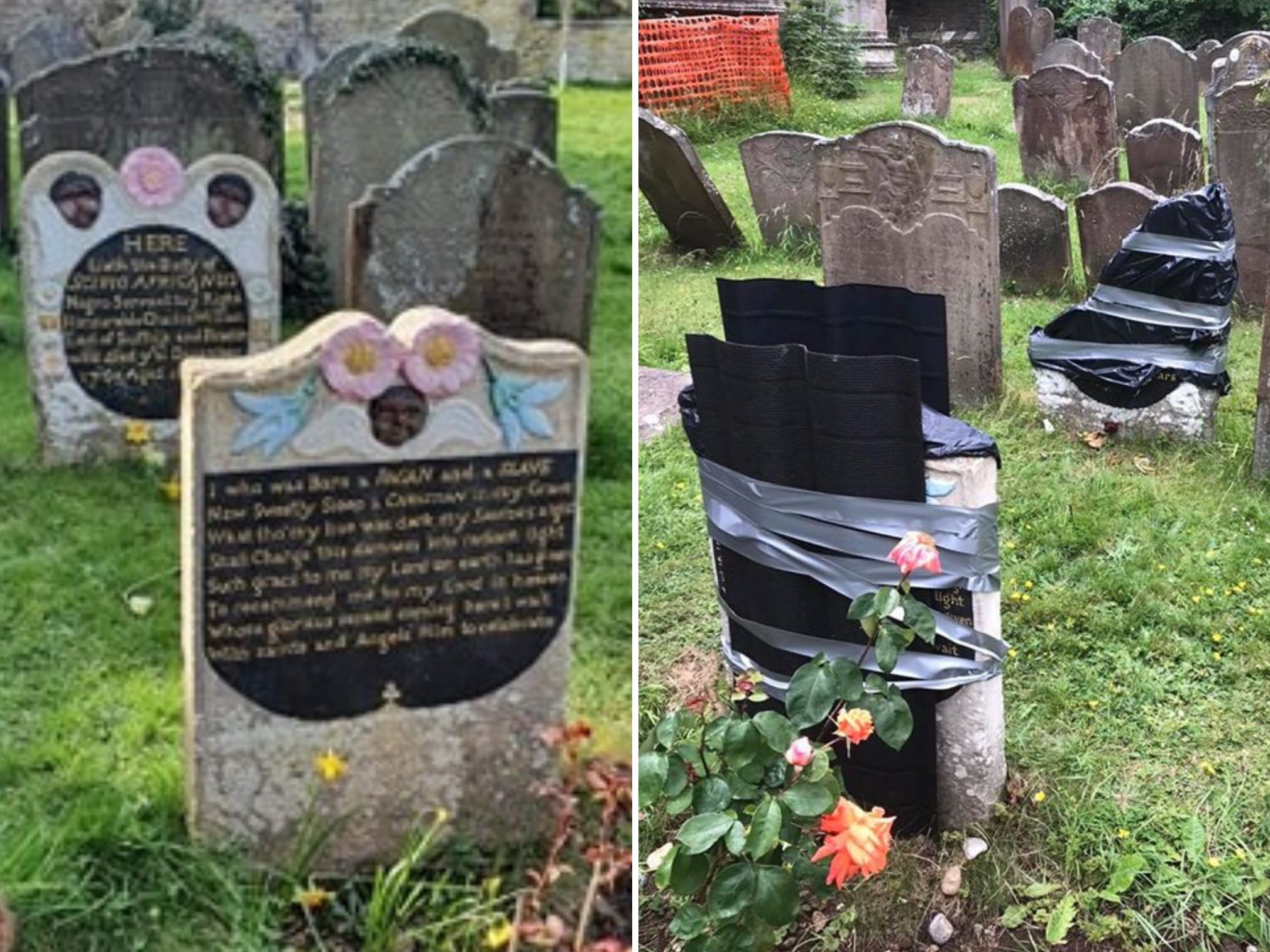Child slave’s grave vandalised in apparent revenge attack for Colston statue
Mayor urges Bristolians to showcase city’s ‘ability to live with difference’

Two headstones marking the grave of a man born into slavery have been smashed in an apparent “retaliation attack” in Bristol following the toppling of slave trader Edward Colston’s statue.
A message left in chalk on nearby flagstones said: “Now look at what you made me do. Stop protesting. Leave Elliott’s grave alone. Put Colston’s statue back or things will really heat up.”
The grade II-listed, brightly painted memorial to Scipio Africanus is situated in St Mary’s churchyard in Henbury, Bristol.
Enslaved as a servant in the 7th Earl of Suffolk’s home, Scipio Africanus – named so either by the earl or a previous “owner” – died aged 18 in 1720. Names of Roman origin were frequently chosen for enslaved people.
Marvin Rees, the mayor of Bristol, described the memorial as an “iconic piece of Bristol’s history” which had been “smashed in two”.
He added: “We just don’t want to go down the route. We don’t want to go down this tit-for-tat invisible attacks on each other.
“The opportunity is to really showcase to the country and to the world that we are a city that has the ability to live with difference; our own differences in who we are, our difference in understanding and experience of the world.
“I just hope and pray that that’s the route we take, and my appeal to Bristolians is that this is the kind of city we defend – one that we can uphold as a real example to the rest of the country and the world.”
Avon and Somerset Police said it believed the incident occurred in the first eight hours of Wednesday, adding that an investigation is in its early stages. Officers have carried out house-to-house and CCTV inquiries, the force said.
The reference to “Elliott” in the message left by the desecrated grave is likely a reference to music hall star GH Elliott, who performed as the Chocolate Coloured C**n.
His gravestone, along with that of fellow music hall star Alice Banford who also wore blackface, was removed from St Margaret’s Church in Rottingdean, East Sussex, over its “deeply offensive” inscription, which included his stage name.
Council opposition leader Mark Weston agreed the destruction of Africanus’s grave was most likely a “retaliation attack” in a Facebook post topped “WHERE WILL THIS END...”
“I am deeply saddened by what is happening,” he wrote. ”We have seen war memorials defaced and statues vandalised and I have to wonder where this will end.
“Our history is not simple, and a person’s actions are rarely clear cut. Our nation’s past is an intricate web of greatness, atrocity, heroism and villainy. We have good people that do bad things, bad people that occasionally strive for redemption and everything in between.
“This confusion becomes especially evident as we apply the lens of modern morality to the actions of centuries past.”
Historic protests following the US police killing of George Floyd have ignited a heated national debate about British colonialism and imperialism. Protesters pulled the 125-year-old statue of Colston from its plinth and dumped it into Bristol harbour, near a bridge named in honour of enslaved man Pero Jones.
Four days later, Bristol City Council retrieved the statue, which will be displayed in a museum along with placards from the Black Lives Matter protest.
Images showed that the two gravestones commemorating Scipio Africanus have been covered up in an attempt to prevent further damage.
Mr Rees said the council was launching a history commission “because part of the tension in Bristol has been about how we wrestle with our history”. He hopes that providing a “fuller story” of the city will boost residents shared understanding of “who we are”.
Additional reporting by PA
